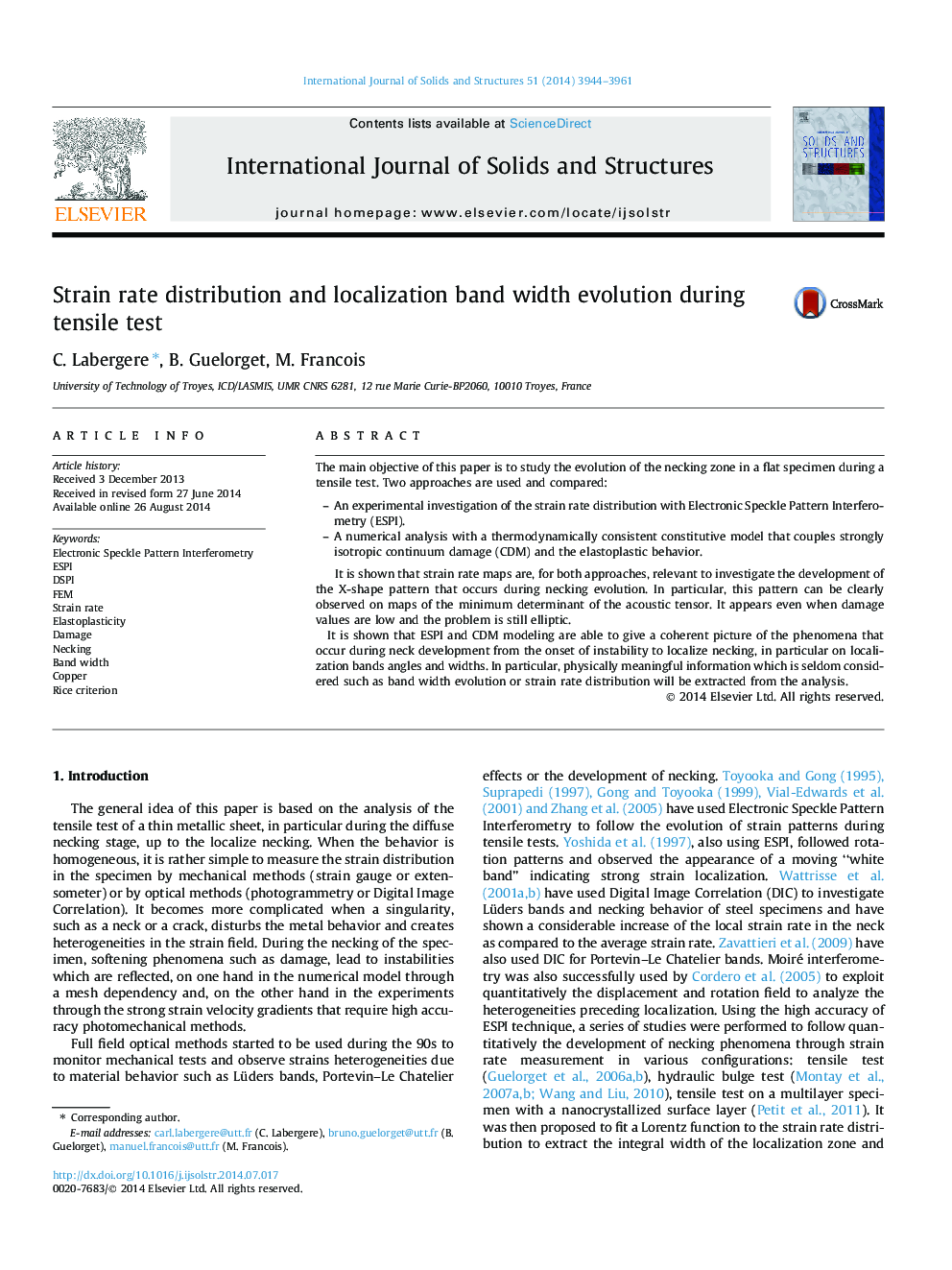| Article ID | Journal | Published Year | Pages | File Type |
|---|---|---|---|---|
| 277542 | International Journal of Solids and Structures | 2014 | 18 Pages |
•Strain rate measured by ESPI is introduced to investigate the localization band width.•This tensile test is simulated numerically with a 3D FEM.•Experiments and modeling give a coherent image of necking evolution.•A method to compute and measure the band width evolution is proposed.•The strain rate localization based on the bifurcation phenomenon is studied.
The main objective of this paper is to study the evolution of the necking zone in a flat specimen during a tensile test. Two approaches are used and compared:–An experimental investigation of the strain rate distribution with Electronic Speckle Pattern Interferometry (ESPI).–A numerical analysis with a thermodynamically consistent constitutive model that couples strongly isotropic continuum damage (CDM) and the elastoplastic behavior.It is shown that strain rate maps are, for both approaches, relevant to investigate the development of the X-shape pattern that occurs during necking evolution. In particular, this pattern can be clearly observed on maps of the minimum determinant of the acoustic tensor. It appears even when damage values are low and the problem is still elliptic.It is shown that ESPI and CDM modeling are able to give a coherent picture of the phenomena that occur during neck development from the onset of instability to localize necking, in particular on localization bands angles and widths. In particular, physically meaningful information which is seldom considered such as band width evolution or strain rate distribution will be extracted from the analysis.
